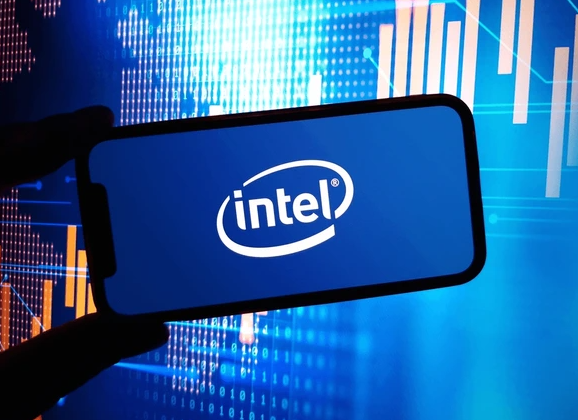
Ultima Markets App
Trade Anytime, Anywhere
Important Information
This website is managed by Ultima Markets’ international entities, and it’s important to emphasise that they are not subject to regulation by the FCA in the UK. Therefore, you must understand that you will not have the FCA’s protection when investing through this website – for example:
- You will not be guaranteed Negative Balance Protection
- You will not be protected by FCA’s leverage restrictions
- You will not have the right to settle disputes via the Financial Ombudsman Service (FOS)
- You will not be protected by Financial Services Compensation Scheme (FSCS)
- Any monies deposited will not be afforded the protection required under the FCA Client Assets Sourcebook. The level of protection for your funds will be determined by the regulations of the relevant local regulator.
Note: Ultima Markets is currently developing a dedicated website for UK clients and expects to onboard UK clients under FCA regulations in 2026.
If you would like to proceed and visit this website, you acknowledge and confirm the following:
- 1.The website is owned by Ultima Markets’ international entities and not by Ultima Markets UK Ltd, which is regulated by the FCA.
- 2.Ultima Markets Limited, or any of the Ultima Markets international entities, are neither based in the UK nor licensed by the FCA.
- 3.You are accessing the website at your own initiative and have not been solicited by Ultima Markets Limited in any way.
- 4.Investing through this website does not grant you the protections provided by the FCA.
- 5.Should you choose to invest through this website or with any of the international Ultima Markets entities, you will be subject to the rules and regulations of the relevant international regulatory authorities, not the FCA.
Ultima Markets wants to make it clear that we are duly licensed and authorised to offer the services and financial derivative products listed on our website. Individuals accessing this website and registering a trading account do so entirely of their own volition and without prior solicitation.
By confirming your decision to proceed with entering the website, you hereby affirm that this decision was solely initiated by you, and no solicitation has been made by any Ultima Markets entity.
I confirm my intention to proceed and enter this website Please direct me to the website operated by Ultima Markets , regulated by the FCA in the United KingdomWhy Is Intel Stock So Cheap?
Intel shares hit levels not seen in decades in 2024, with the chip giant losing over 60% of its value and being the worst performer in the Dow Jones Industrial Average. For a company that once ruled the semiconductor industry, this is a big drop and many investors are wondering why Intel stock is so cheap compared to Advanced Micro Devices and Nvidia.
The answer lies in a perfect storm of financial struggles, competitive pressures and execution challenges that have fundamentally changed Intel’s position in the tech world. While the stock’s low price might look attractive to value investors, understanding the underlying reasons for this decline is key before you buy Intel stock.
Current Market Situation and Recent Declines
Intel’s stock price tells a story of a company in trouble. The stock went below $20 in August 2024 after the company missed estimates for the second quarter by a wide margin. That’s a long way down from the $75 peak during the dot-com era.
It got worse when Intel announced a major restructuring including laying off around 15,000 employees – about 15% of the workforce. And to make matters worse, Intel suspended its dividend for the first time since 1992, ending a 32-year streak that made it a favorite among income investors.
Despite all this, the stock has shown some recent strength. Intel landed a $3 billion contract with the U.S. Department of Defense for secure chip manufacturing and partnered with Amazon Web Services through its Intel Foundry Services division. These developments gave investors some hope, but the stock is still far below its historical ranges.
Key Trading Data (As of July 2025):
- Current Stock Price: ~$22
- 52-Week Range: $17.65 – $37.16
- Market Cap: ~$85 billion
Technical analysis shows Intel trading in a range between $17.65 and $27.55, with indicators suggesting short-term bounces. But the stock is below its moving averages and momentum indicators are weak, reflecting the underlying fundamental issues the company faces.

Financial Performance Issues
The problem with Intel becomes clear when you look at its recent financials. In Q2 2024, Intel reported a net loss of $1.6 billion, a big reversal from the $1.5 billion profit in Q2 2023.
Revenue has been just as bad. The company’s Q2 2024 revenue was down 1% year-over-year to $12.8 billion, missing estimates. That’s particularly painful given the broader semiconductor industry grew during the same period with Nvidia and AMD posting strong gains.
Intel’s foundry business, the heart of CEO Pat Gelsinger’s transformation plan, has been a big drag on profitability. The foundry division lost $7 billion in 2023, a huge cost to build out capacity and attract external customers.
Cash flow is another major issue. Over the trailing twelve months, Intel has reported negative free cash flow of $10.4 billion, mainly due to the heavy capital investments needed to expand and upgrade its manufacturing facilities.
Gross margins have compressed to around 38%, down from the 60%+ levels it consistently hit during its dominant era.
The trend continued into 2025, with Q1 results showing revenue of $12.67 billion and adjusted earnings per share of $0.13, but a GAAP loss of $0.19 per share. That’s Intel’s fourth consecutive quarterly loss.
Competitive Pressures and Market Share Loss
Intel’s problems go beyond financials to fundamental market share loss across its core business segments. In personal computer CPUs, where Intel once dominated, Advanced Micro Devices has made major gains with its Ryzen processor series.
The biggest strategic miss has been Intel’s failure to capitalize on the AI boom. Nvidia has become the world’s most valuable company by dominating AI chips. Intel’s Gaudi 3 AI accelerator is its attempt to compete, but adoption has been slow.
Intel also missed the mobile processor market, which is now owned by Qualcomm and Apple’s in-house silicon. This failure to diversify beyond PC and server markets has left Intel too dependent on mature, slow-growing segments.
Manufacturing delays have worsened these challenges. Intel’s struggles with 7nm and 5nm processes have allowed TSMC to take the lead in advanced chip manufacturing.
In data centers, AMD’s EPYC processors and Nvidia’s data center GPUs have taken market share away from Intel’s Xeon processors.
Foundry Business Transformation Challenges
Intel’s IDM 2.0 strategy is its attempt to transform into a major contract chip manufacturer. However, this shift is capital-intensive and slow to yield returns.
Capital expenditures are running over $25 billion annually. The foundry division is currently unprofitable and is expected to remain so until at least 2027 or 2028.
Winning major customers is difficult due to TSMC’s dominance and proven track record. Intel also lags in extreme ultraviolet (EUV) lithography.
The upcoming 18A manufacturing process node—scheduled for production in 2025—will be a major test. Success could validate the foundry strategy.

Valuation vs. Competitors
Intel’s valuation metrics show why investors are cautious:
- Price-to-Sales (P/S): 1.7× vs. AMD’s 7.4× and Nvidia’s 19.6×
- Price-to-Book (P/B): 1.04× (low compared to peers)
Intel’s market cap of ~$85 billion pales in comparison to Nvidia’s $2.6 trillion and AMD’s $215 billion.
Intel shares currently trade at about one-quarter of their all-time high of $75.81 in 2000.
Government Support and Strategic Importance
Intel is strategically important to the U.S. The CHIPS Act provides up to $8.5 billion in grants and $11 billion in loans. Intel also has a $3 billion contract with the U.S. Department of Defense.
These incentives lower capital costs but do not guarantee success. Still, Intel’s domestic manufacturing presence and geopolitical importance provide a layer of downside protection.
Catalysts and Turnaround Prospects
Catalysts that could support a turnaround:
- Gaudi 3 AI accelerator gaining traction
- Success of the 18A node in 2025
- Government contracts and CHIPS Act support
- AWS partnership for foundry services
Intel’s long-term targets:
- 30% foundry margins
- 40% product margins by 2030
Investment Risks and Considerations
Intel’s turnaround depends on overcoming:
- Execution delays
- Ongoing competitive losses
- Financial stress from negative FCF
- Market’s skepticism about new business model
Investors should weigh these risks against potential upside.
Should You Buy Intel Stock?
Ultimately, the question is whether to buy intel stock depends on your risk tolerance and investment time horizon. The stock’s valuation reflects a lot of pessimism, so there’s potential for big returns if intel executes its turnaround.
For value investors, the low price to sales ratio and government support could be an attractive opportunity. The company’s assets, including advanced manufacturing facilities and intellectual property, may be worth more than the current stock price.
But buying intel stock requires patience and conviction. The transformation timeline is several years, during which the stock could be volatile or decline further if execution fails. The investment thesis depends heavily on management’s ability to compete in contract manufacturing while stabilizing the core product businesses.
Conservative investors might want to wait for clearer signs of operational improvement before committing capital. The stock’s recent trading range means opportunities to buy at good prices may persist as the turnaround unfolds.
Risk-tolerant investors with a longer time horizon might see current prices as an opportunity to buy stock in a company with big upside. intel’s strategic importance and government support provide some downside protection, while successful execution could be huge.
The Motley Fool recommends Advanced Micro Devices over intel, reflecting the market’s preference for companies with clearer growth paths. But contrarian investors might see intel’s challenges as an opportunity in one of the biggest battleground stocks in tech. So why is intel stock so low? It’s because of the real concerns about intel’s competitive situation and the potential if intel delivers on its turnaround. It’s a classic turnaround play with big risk and big reward.
Start Trading with Ultima Markets
Looking to trade semiconductor stocks like Intel, AMD, or Nvidia? Ultima Markets offers direct access to U.S. stocks, insightful research, and advanced trading tools. Stay ahead of the market with real-time analysis and education tailored for every level of trader.
Disclaimer: This content is provided for informational purposes only and does not constitute, and should not be construed as, financial, investment, or other professional advice. No statement or opinion contained here in should be considered a recommendation by Ultima Markets or the author regarding any specific investment product, strategy, or transaction. Readers are advised not to rely solely on this material when making investment decisions and should seek independent advice where appropriate.












